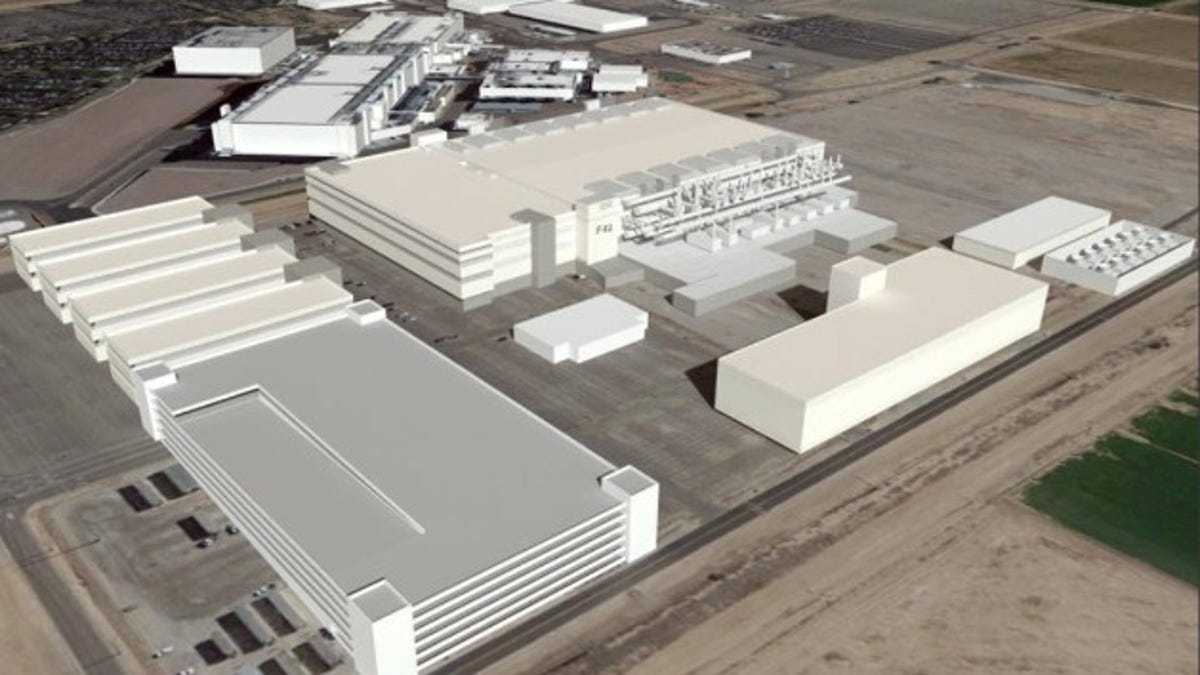Here's why Obama is visiting Intel
Simply put, the chipmaker is a U.S. based manufacturing colossus, as this quick overview of its operations should make clear.

On Wednesday, President Obama is due to visit an Intel plant in Arizona. Here's why.
Obama aims to highlight manufacturing in America--one of the State of the Union's themes--and it's hard to find a better example of that than the world's leading chipmaker. Intel is now one of America's foremost manufacturers, boasting some of the most sophisticated manufacturing facilities in the world, many of them sprinkled throughout the U.S.
Its development fabs (fabrication plants) in Oregon are the most cutting-edge of its leading-edge factories and have already received one presidential visit, in February of last year.
Obama's Wednesday visit--as part of his Made-in-the-USA theme--will highlight Intel's high-volume manufacturing facilities in Arizona (see chart below).
In Chandler, Intel will make its next generation of 14-nanometer (nm) processors that will be its most highly-integrated and power-efficient to date. Those chips--many of them a so-called SoC or system-on-a-chip--will power future ultrabooks, tablets, and smartphones.
And an often overlooked aspect of Intel's manufacturing might is its strategic relationship with Boise, Idaho-based Micron Technology. Those two companies formed Intel Micron Flash Technologies (IMFT) in 2006 and operate two U.S. plants, one in Utah and another in Virginia.
The manufacturing technologies used at those plant are world class, too. Flash chips from those plants go into Intel and Micron solid-state drives and, who knows, IMFT chips may someday find their way into Apple MacBooks, iPads, or iPhones.
And all of this is good for exports. "Semiconductors are America's top exporting industry and with three quarters of semiconductors being designed and manufactured here and 82 percent of our sales outside the U.S.," said the Semiconductor Industry Association in a statement in October of last year.
Intel chip fabrication plants (fabs) in the U.S.:
- Oregon, Hillsboro: D1X (development), microprocessors, 14nm*, starts 2013
- Oregon Hillsboro: D1D (development), microprocessors, 22nm, started 2003
- Oregon Hillsboro: D1C (development), microprocessors, 32nm/22nm, started 2001
- Chandler, Arizona: Fab 42, microprocessors, 14nm, starts 2013
- Chandler, Arizona: Fab 32, microprocessors, 32nm/22nm, started 2007
- Chandler, Arizona: Fab 12, microprocessors/chipsets, 65nm/22nm, started 1996
- Rio Ranch, New Mexico: Fab 11X, microprocessors, 45nm/32nm, started 2002
- Hudson, Massachusetts: Fab 17, chipsets, 130nm, started 1998
- Lehi, Utah: IMFT** fab, flash memory, 20nm, started 2007
- Manassas, Virginia: IMFT fab, flash memory, 25nm, started 2006
*nanometer
**Intel Micron Flash Technologies, owned 49 percent by Intel, 51 percent by Micron Technology

